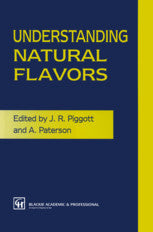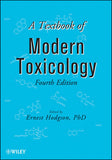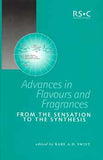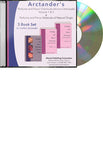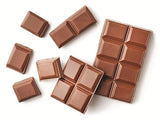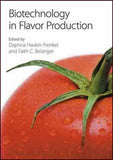Understanding Natural Flavors By Piggott, J. R., Paterson, A.
Understanding Natural Flavors
Piggott, J. R., Paterson, A.
Softcover reprint of the original 1st ed. 1994, XV, 318 pages
There has been increasing interest in recent years in the concept and production of natural foods. Advertising claims that food is natural, without additives or artificial ingredients, have taken on great importance in marketing. Consumption of food that can be considered natural is currently central to the sophisticated lifestyle. However, there is only a limited published literature on what constitutes natural food flavours. Much of the flavour and fragrance industry has worked on development of synthetic or 'nature-identical' flavours which represent a chemist's simu lation of the natural character. As marketing claims become more strident it is necessary to gain a better understanding of natural food flavours in order to safeguard food quality and for prevention of fraud. There have been great advances recently in analytical chemistry, and partly as a result of this progress there seems to be a never-ending increase in the number of volatile compounds identified in foods. Unfortunately, this has not always been matched by an equal increase in the understanding of how these volatile compounds arise, or how they contribute to the sensation which we call flavour. Throughout the development of Western society, quality of food, particularly flavour, has been highly regarded. The amateur or professional cook with the skills to optimize and maintain standards in flavour has been held in the highest respect.
TABLE OF CONTENTS :
1 Predicting acceptability from flavour data.
- Abstract.
- 1.1 Introduction.
- 1.1.1 Procedure considerations.
- 1.1.2 Design considerations.
- 1.1.3 Analysis considerations.
- 1.1.4 Practical considerations.
- 1.2 Examples of the multiple regression approach.
- 1.2.1 Predicting hedonic values of raw carrot texture from sensory descriptive attributes.
- 1.2.2 Predicting hedonic values of cooked rice from sensory descriptive attributes.
- 1.2.3 Predicting strawberry jam preference from sensory and analytical variables.
- 1.3 Conclusion.
- References.
- 2 Sensory analysis of flavours.
- Abstract.
- 2.1 Introduction.
- 2.1.1 Definition.
- 2.1.2 Quality: two sources of variables.
- 2.2 The sensory instruments.
- 2.3 Psychology.
- 2.4 Psychophysics.
- 2.5 Physiology: oral, nasal, retronasal and trigeminal perception.
- 2.6 Sensory analysis.
- 2.6.1 The possibilities.
- 2.6.2 The tool box.
- 2.6.3 Quality of judgement.
- 2.6.4 Scales.
- 2.6.5 Methods.
- 2.6.6 Sensory technique.
- References.
- 3 Food acceptability.
- Abstract.
- 3.1 Introduction.
- 3.2 Tools for measuring and understanding product acceptance and perception.
- 3.3 Measuring acceptance.
- 3.3.1 Environment and context.
- 3.3.2 Products being considered.
- 3.3.3 Product associations.
- 3.3.4 Availability and familiarity.
- 3.3.5 Variety.
- 3.3.6 Interviewer influence.
- 3.4 Methods for exploring underlying causes of acceptance.
- 3.4.1 Regression modelling.
- 3.4.2 Trade-off modelling and conjoint analysis.
- 3.4.3 Behavioural modelling.
- 3.4.4 Information-processing-network approaches.
- 3.5 Conclusions.
- References.
- 4 Psychology and psychophysiological measurements of flavour.
- Abstract.
- 4.1 Introduction.
- 4.2 The physiological study of eating behaviours.
- 4.3 Psychophysiological techniques.
- 4.4 R. W. Moncrieff.
- 4.5 Averaged evoked potentials.
- 4.6 Psychophysiology, EEG and brain electrical activity mapping.
- 4.7 Neuropsychology and the cerebral cortex.
- 4.8 The Warwick olfaction research methodology.
- 4.8.1 The quantification of BEAM maps.
- 4.9 A BEAM investigation using infants and a longitudinal adult study.
- 4.10 Event-related potentials and food odours.
- 4.11 Conclusions.
- References.
- 5 Matching sensory and instrumental analyses.
- Abstract.
- 5.1 Introduction.
- 5.2 Goals.
- 5.2.1 Understanding causal relationships.
- 5.2.2 Finding calibration and prediction models.
- 5.2.3 Application in quality assurance and management.
- 5.3 Methods.
- 5.3.1 Sensory methods.
- 5.3.2 Instrumental methods.
- 5.3.3 Computers and data analytical methods.
- 5.4 Philosophy.
- 5.4.1 To what extent can flavour be measured?.
- 5.4.2 Philosophical concepts of relevance in flavour assessment.
- 5.5 Qualimetrics.
- 5.5.1 Why qualimetrics?.
- 5.5.2 Definitions.
- 5.5.3 Multivariate psychophysics.
- 5.5.4 Multivariate data analysis.
- 5.5.5 Multivariate calibration and prediction.
- 5.6 Examples.-
5.6.1 Goals.
- 5.6.2 Materials and methods.
- 5.6.3 Results: rapid, relevant and reliable methods (goal 1).
- 5.6.4 Results: use of prior knowledge (goal 2).
- 5.6.5 Discussion.
- 5.7 Conclusions.
- Acknowledgement.
- References.
- 6 Product optimization.
- Abstract.
- 6.1 Introduction.
- 6.1.1 Optimization procedure.
- 6.1.2 Definition of the desired response.
- 6.2 Applications of response surface optimization.
- 6.2.1 Thiamine and SO2 content in quality white wine production.
- 6.2.2 Optimization of wine fermentation by using immobilized yeast cells.
- 6.2.3 Optimization of Provolone cheese quality (preference) by sensory descriptive analysis.
- 6.3 Conclusion.
- References.
- 7 Software for data collection and processing.
- Abstract.
- 7.1 Introduction.
- 7.2 Software for data collection.
- 7.3 Software for data analysis (traditional statistical analysis).
- 7.4 Software for data exploration.
- 7.5 The future.
- Acknowledgements.
- References.
- 8 Citrus breeding and flavour.
- Abstract.
- 8.1 Introduction.
- 8.2 Botanical considerations.
- 8.2.1 Taxonomic systems.
- 8.2.2 Breeding problems.
- 8.3 Breeding of citrus flavours.
- 8.3.1 Sensory analysis.
- 8.3.2 Nonvolatile flavours.
- 8.3.3 Volatile flavours.
- 8.3.4 Conventional breeding programmes.
- 8.3.5 New breeding approaches.
- 8.4 Conclusion.
- Acknowledgements.
- References.
- 9 Cereal flavours.
- Abstract.
- 9.1 Introduction.
- 9.2 Principal flavour-formation routes in cereals and cereal products.
- 9.3 Bio off-flavour.- References.
- 10 Meat flavour.
- Abstract.
- 10.1 Introduction.
- 10.2 Precursors of meat flavour.
- 10.3 Lipid-derived volatiles in meat.
- 10.3.1 Lipid autoxidation.
- 10.3.2 Contribution of lipid-derived volatiles to meat aroma.
- 10.3.3 Species-characteristic aromas.
- 10.4 Volatiles from water-soluble precursors.
- 10.4.1 Maillard reaction.
- 10.4.2 Strecker degradation.
- 10.4.3 Contribution of furfurals and furanones to aroma.
- 10.4.4 Nitrogen compounds in meat aroma.
- 10.4.5 Sulphur compounds in meat aroma.
- References.
- 11 Consumer perceptions of natural foods.
- Abstract.
- 11.1 Introduction.
- 11.2 Factors influencing perception of food.
- 11.3 Consumer perceptions and attitudes.
- 11.3.1 Discussion.
- 11.3.2 The safety of natural foods.
- 11.4 Short-term future.
- 11.5 Long-term future.
- 11.5.1 Technology.
- 11.5.2 Government.
- 11.5.3 Corporate business.
- 11.5.4 Does natural food imply safe food?.
- 11.6 Conclusion.
- References.
- 12 Biotechnical production of flavours
— current status.
- Abstract.
- 12.1 Introduction.
- 12.2 What are bioflavours?.
- 12.3 Plant cells as biocatalysts.
- 12.4 Exogenous substrates and cell vitality.
- 12.5 Artificial sites for the accumulation of product.
- 12.6 Nutritional improvement.
- 12.7 Metabolism of monoterpenes.
- 12.8 Photomixotrophy.
- 12.9 Conclusion.
- Acknowledgements.
- References.
- 13 Natural flavours for alcoholic beverages.
- Abstract.
- 13.1 Introduction.
- 13.2 Aromatized wines.
- 13.3 Anise-flavoured spirits.
- 13.4 Fruit liqueurs.
- 13.5 Control of the naturalness of flavours.
- 13.6 Conclusion.
- References.
- 14 Beer flavour.
- Abstract.
- 14.1 Introduction.
- 14.2 Hop flavour.
- 14.2.1 Wort boiling.
- 14.2.2 Fermentation.
- 14.2.3 Maturation.
- 14.3 Flavour stability.
- 14.4 Conclusions.
- Acknowledgements.
- References.
- 15 Wine flavour.
- Abstract.
- 15.1 Introduction.
- 15.2 Terpenes.
- 15.3 2-Methoxy-3-isobutylpyrazine.
- 15.4 Influence of geographical factors.
- 15.5 Conclusions.
- Acknowledgements.
- References.
- 16 Flavour of distilled beverages.
- Abstract.
- 16.1 Introduction.
- 16.2 Factors influencing the quality of grape brandies.
- 16.2.1 Introduction.
- 16.2.2 Grape variety.
- 16.2.3 Ripeness of the grapes.
- 16.2.4 Sanitary state of the grapes.
- 16.2.5 Method of harvesting.
- 16.2.6 Fermentation.
- 16.2.7 Influence of yeast contact and storage time on volatile components in wine.
- 16.2.8 Influence of quantity of yeast during distillation on the composition volatiles in wine distillates.
- 16.2.9 Influence of the method of distillation.
- 16.2.10 Conclusions.
- 16.3 Factors influencing the quality of Scotch whisky.
- 16.3.1 Introduction.
- 16.3.2 Peated malt.
- 16.3.3 Mashing, fermentation and distillation.
- 16.3.4 Ethyl carbonate.
- 16.3.5 Conclusions.
- 16.4 Maturation.
- 16.4.1 Introduction.
- 16.4.2 Oak lactones.
- 16.4.3 Aromatic aldehydes.
- 16.4.4 Wood extracts.
- 16.4.5 Conclusions.
- 16.5 Characterization of distilled beverages using instrumental analysis.- References.
- 17 Cocoa flavour.
- Abstract.
- 17.1 Introduction.
- 17.2 Components of cocoa flavour.
- 17.3 Cocoa cultivation and processing.
- 17.3.1 Harvesting.
- 17.3.2 Fermentation.
- 17.3.3 Drying.
- 17.3.4 Roasting.
- 17.3.5 Cocoa lipids.
- 17.4 Conclusion.
- References.
- 18 Cheese flavour.
- Abstract.
- 18.1 Introduction.
- 18.2 Cheese-making.
- 18.3 Lactic acid fermentation.
- 18.3.1 Starter cultures.
- 18.3.2 Effect on maturation.
- 18.4 Lipids.
- 18.4.1 Role of lipids.
- 18.4.2 Formation of aroma and flavour compounds.
- 18.5 Proteins.
- 18.5.1 Proteolytic enzymes.
- 18.5.2 Flavour peptides.
- 18.5.3 Peptides in cheese flavour.
- 18.5.4 Formation of volatiles.
- 18.6 Conclusion.
- References.
- 19 Savoury flavours — an overview.
- Abstract.
- 19.1 Introduction.
- 19.1.1 Odour.
- 19.1.2 Taste.
- 19.1.3 Trigeminal sensations.
- 19.1.4 Complexity.
- 19.2 Savoury foods.
- 19.3 Sources of savoury flavour.
- 19.3.1 Sodium chloride.
- 19.3.2 Umami.
- 19.3.3 Protein hydrolysates.
- 19.3.4 Maillard reactions.
- 19.3.5 Fat reactions.
- 19.4 Release of flavour.
- 19.5 Conclusions.
- References.

